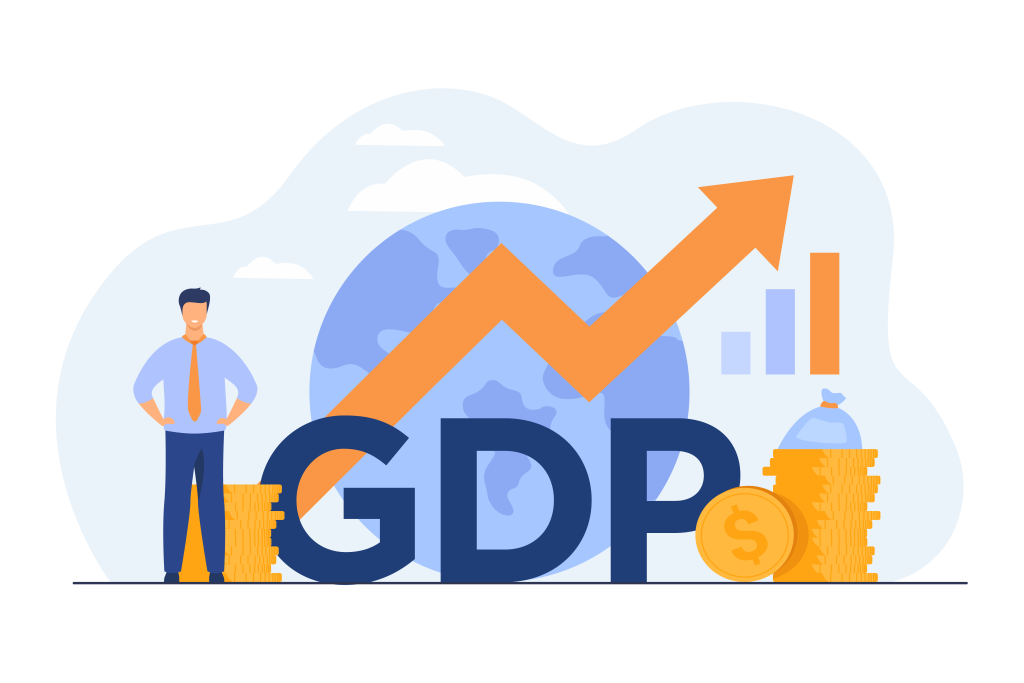Understanding the stock market isn’t just about charts and corporate earnings. At the heart of market movements lie the core economic indicators that shape investor expectations and confidence. These data points aren’t just dry government reports—they are powerful signals that drive trading decisions across the globe. If you want to grasp the forces moving the market, you need to understand GDP growth, unemployment rates, inflation, and interest rates. Economic indicators provide the context behind every major move in the market. They’re the heartbeat of financial forecasting, guiding everything from corporate investment plans to household spending habits. For investors, these signals can mean the difference between riding a rally or getting caught in a downturn. When GDP surges, it suggests a thriving economy. When unemployment ticks up, it hints at potential slowdowns. Inflation and interest rates, meanwhile, dictate how much it costs to borrow, invest, and grow.
Ignoring these numbers is like driving without a dashboard—you might move forward, but you won’t know how fast you’re going, when to slow down, or when to refuel. For anyone looking to build a resilient, well-informed investment strategy in today’s complex financial environment, keeping a close eye on these indicators is not optional—it’s essential.
GDP Growth: The Market’s Pulse

Gross Domestic Product (GDP) is the broadest measure of economic activity. When GDP is growing steadily, it’s often seen as a sign of a healthy, expanding economy. Businesses are producing, consumers are spending, and investors feel confident.
How It Impacts Stocks:
- Positive GDP growth generally boosts equity markets as it signals corporate earnings are likely to rise.
- Slowing or negative GDP growth may suggest an economic downturn, leading to reduced earnings expectations and falling stock prices.
Investors track GDP reports closely. If actual GDP growth exceeds forecasts, markets often rally. Conversely, disappointing numbers can trigger selloffs.
Unemployment Rates: The Human Side of Markets
The unemployment rate tells us how many people are actively looking for work but can’t find it. While the number itself matters, the trend is often more telling.
How It Impacts Stocks:
- Declining unemployment indicates a strong labor market, rising wages, and increased consumer spending.
- Rising unemployment can signal economic trouble, reducing consumption and weakening corporate profits.
Interestingly, the market sometimes reacts negatively to very low unemployment. Why? Because it can pressure the Federal Reserve to raise interest rates to combat inflation, which can dampen stock valuations.
Inflation Data: The Silent Market Shaker
Inflation—the rate at which prices rise—is one of the most critical indicators watched by central banks, investors, and analysts alike. When inflation is under control, markets often perform well. But when it gets too high, it can create uncertainty.
How It Impacts Stocks:
- Moderate inflation tends to support stock market growth, particularly in sectors like consumer goods and materials.
- High inflation erodes purchasing power, increases business costs, and pressures central banks to raise rates.
Investors monitor reports like the Consumer Price Index (CPI) and Producer Price Index (PPI) to gauge inflation. These numbers influence everything from interest rates to the performance of individual sectors.
Interest Rates: The Cost of Money

Few indicators have as immediate an effect on the stock market as interest rates. Set primarily by central banks (like the U.S. Federal Reserve), interest rates determine the cost of borrowing money for businesses and consumers.
How It Impacts Stocks:
- Lower interest rates usually encourage borrowing, investing, and spending—good for stock prices.
- Higher interest rates can cool off an overheating economy but often hurt stocks, especially growth companies that rely on cheap financing.
The stock market often reacts strongly to central bank meetings, especially when there’s a surprise change in policy. Forward guidance (signals about future rate changes) can also move markets even more than the rate change itself.
The Interplay of Economic Indicators: Reading the Signals Together
Each of these indicators can influence markets on its own. But smart investors know it’s the combination of signals that matters most. For instance, strong GDP growth alongside rising inflation might lead to fears of interest rate hikes. Or falling unemployment paired with weak GDP growth could signal a late-cycle economy.
Here’s how savvy traders interpret combinations:
- Strong GDP + Low Inflation + Low Rates = Bullish outlook.
- High Inflation + Low Growth = Stagflation risk, often bearish.
- High Unemployment + Rate Cuts = Recession response, mixed market reaction.
Real Market Reactions: A Glimpse into the Past
Consider the COVID-19 market crash in March 2020. Unemployment skyrocketed, GDP plummeted, and inflation stalled. Central banks slashed interest rates to near zero. The result? After an initial crash, the stock market rebounded sharply, driven by liquidity, low rates, and eventually improving economic indicators.
Or take early 2022. Inflation hit 40-year highs. Despite solid GDP numbers, investor fears of aggressive rate hikes sent markets tumbling. This highlights how expectations around indicators often matter more than the raw data.
Investor Behavior: Navigating the Waves
Understanding economic indicators helps investors avoid being blindsided. If inflation is climbing, they might rotate into commodities or defensive stocks. If rates are falling, they might take on more risk.
Institutional investors often model market behavior based on macroeconomic scenarios. Retail investors, with less time to analyze deeply, can still use economic headlines as red flags or green lights.
Being proactive is key. Smart investors don’t just react—they position themselves ahead of the curve. They recognize how the pieces fit together, and adjust strategies accordingly.
Mattias Knutsson, a market strategist known for bridging macroeconomics with technical insight, consistently emphasizes the value of economic awareness. In his analysis, he notes that while charts show where the market has been, indicators reveal where it may go. By keeping an eye on GDP, inflation, rates, and employment, Knutsson believes traders can better anticipate trends—not just follow them. That’s the kind of edge that separates informed investors from the rest.





